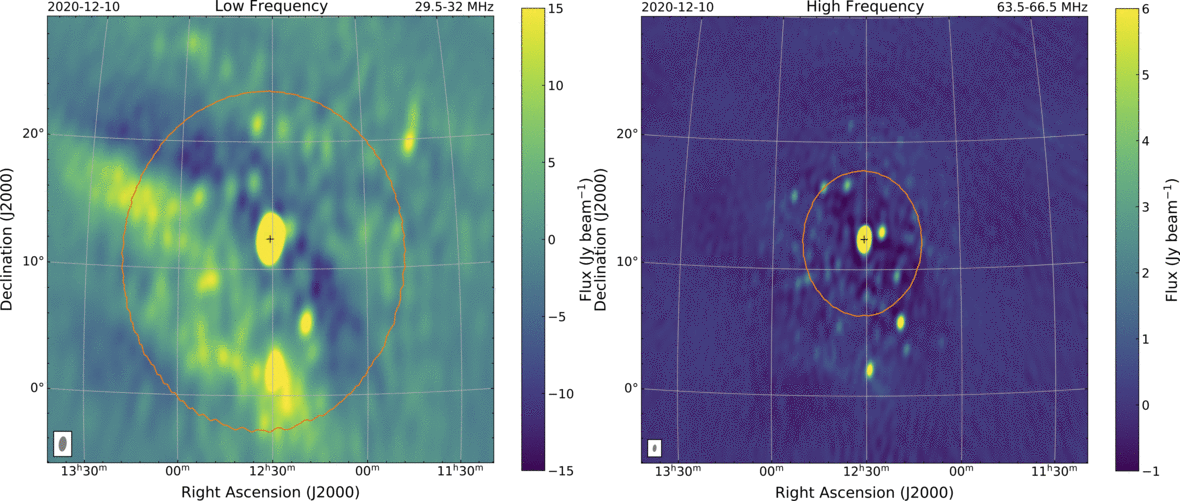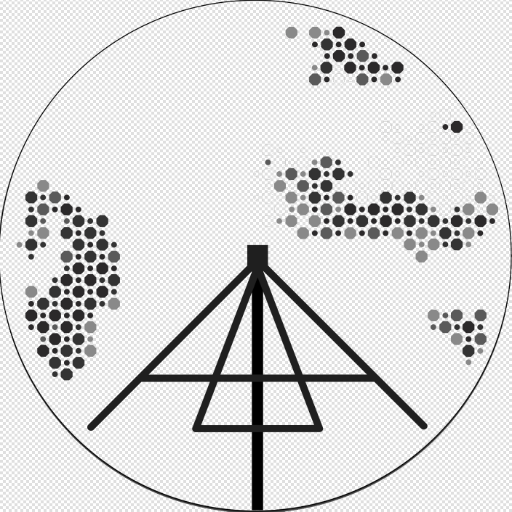Since 1/12/2020, the NenuFAR correlator is fully operational and thus the NenuFAR imaging mode is available. The correlator, nicknamed NICKEL (NenuFAR Imaging Compute Kluster Elaborated from LOFAR’s), is a clone of LOFAR’s new COBALT-2 correlator (Broekema 2018) that was scaled and adapted to NenuFAR’s antenna field. Support was obtained (and much appreciated) from ASTRON to help defining, installing and debugging NICKEL. The correlator will process the signals from 102 Mini-Arrays (96 MA within the core + 6 distant MA synchronized with the WhiteRabbit protocol (Serrano et al. 2009)), in 384 subbands (of width 195 kHz, i.e. 75 MHz total bandwidth, full Stokes), and produce standard Measurement Sets. At present 56 core + 1 distant MA are operational, and these numbers will increase to 80 core + 4 distant MA in the coming weeks, as the newly built MA are integrated in the array.
In order to process NICKEL’s large raw data stream (up to TBs / hour), a pre-processing node nicknamed COPPER (Computer Oriented toward Pre-Processing Extreme Repositories) has been set up on a NICKEL-like node, that has the full suite of calibration and imaging tools available.
Late 2020, a few observations of the Virgo A (M87) region were performed in order to obtain the first-light images from the NenuFAR imager. The images displayed here result from a 10-hour observation of Virgo A in the lower part (29.5-32 MHz) and the upper part (63.5-66.5 MHz) of the NenuFAR band, using 56 core MA only. The orange ellipses show the primary beam of the instrument, i.e. the Half-Power Beam Width of the analog-phased MA accounting for projection in the target direction (cross), simulated with the nenupy package (Loh 2020). This beam is ~22° wide at LF, ~10° at HF.
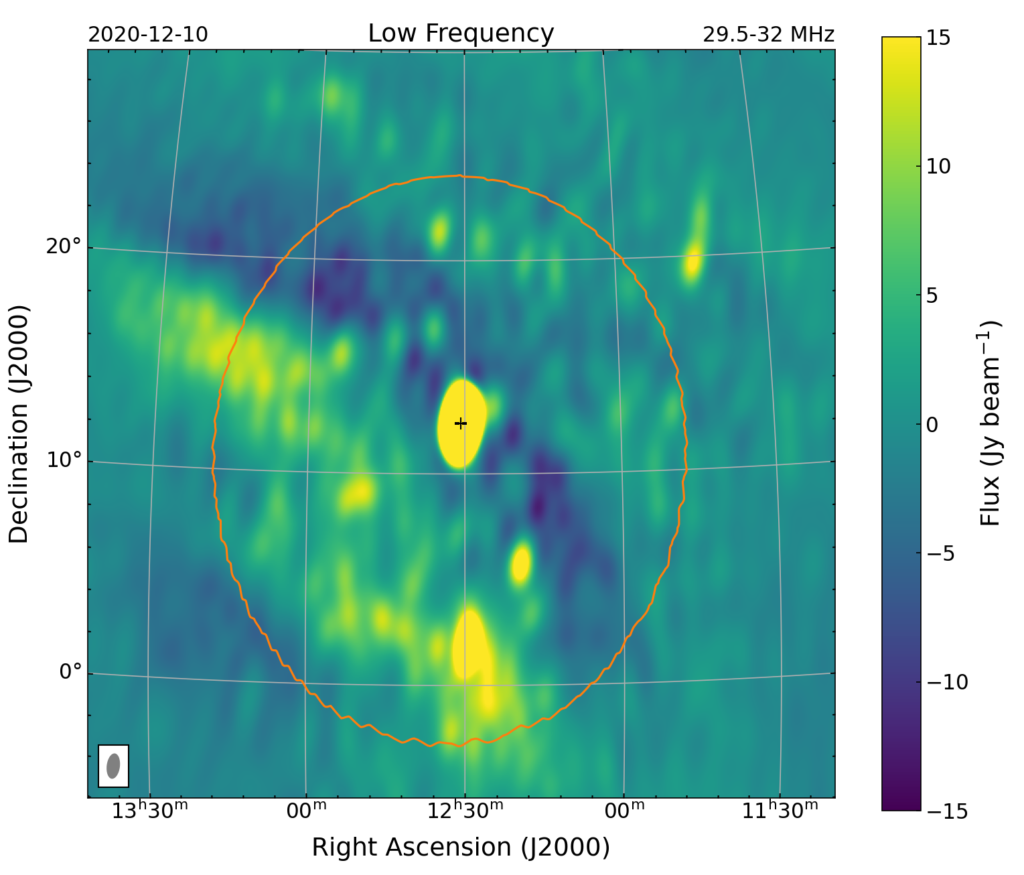
Low Frequency (29.5-32 MHz) 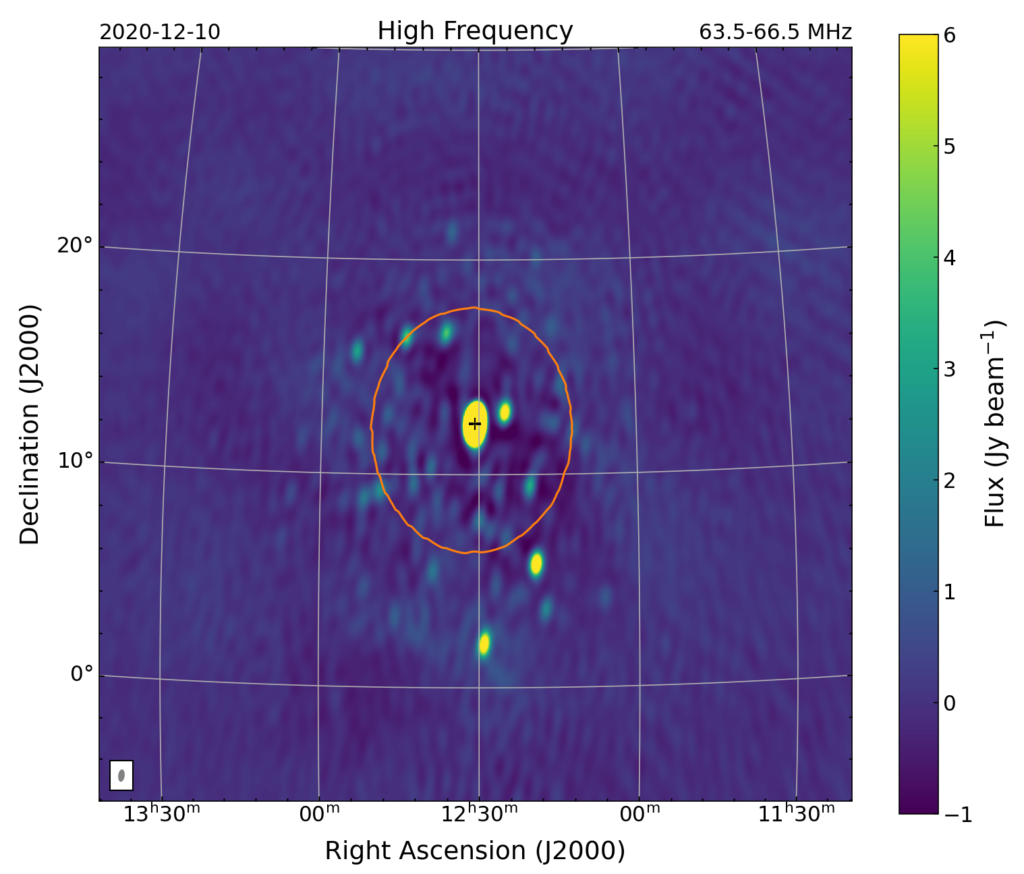
High Frequency (63.5-66.5 MHz)
At low frequencies, we can clearly see the diffuse emission from the tip of the Loop I region. Virgo A is currently unresolved and seen as a powerful point source that appears artificially extended due to the selected color cuts. At high frequencies, main 3C radio sources are detected, including M84, very close to Virgo A. The limiting factor is presently the angular resolution of the 400m-diameter core, which will dramatically improve with the inclusion of the distant MA up to 3km from the core.
Each image was made with WSClean (Offringa 2014) from the visibilities in 16 subbands produced by NICKEL, pre-processed on COPPER with DPPP (van Diepen et al. 2018), and reduced on the data center of the Nançay Radio Observatory.
More images and a movie are available on the NenuFAR news page (https://nenufar.obs-nancay.fr/en/blog-en/)
Key team members include: C. Viou, E. Tremou, A. Loh, J. Girard
We also acknowledge the important help of: V. Pandey, C. Broekema, E. Thetas, F. Mertens, P. Zarka
Supplementary material
Animation made from 16 subbands for each image at both Low and High frequencies.
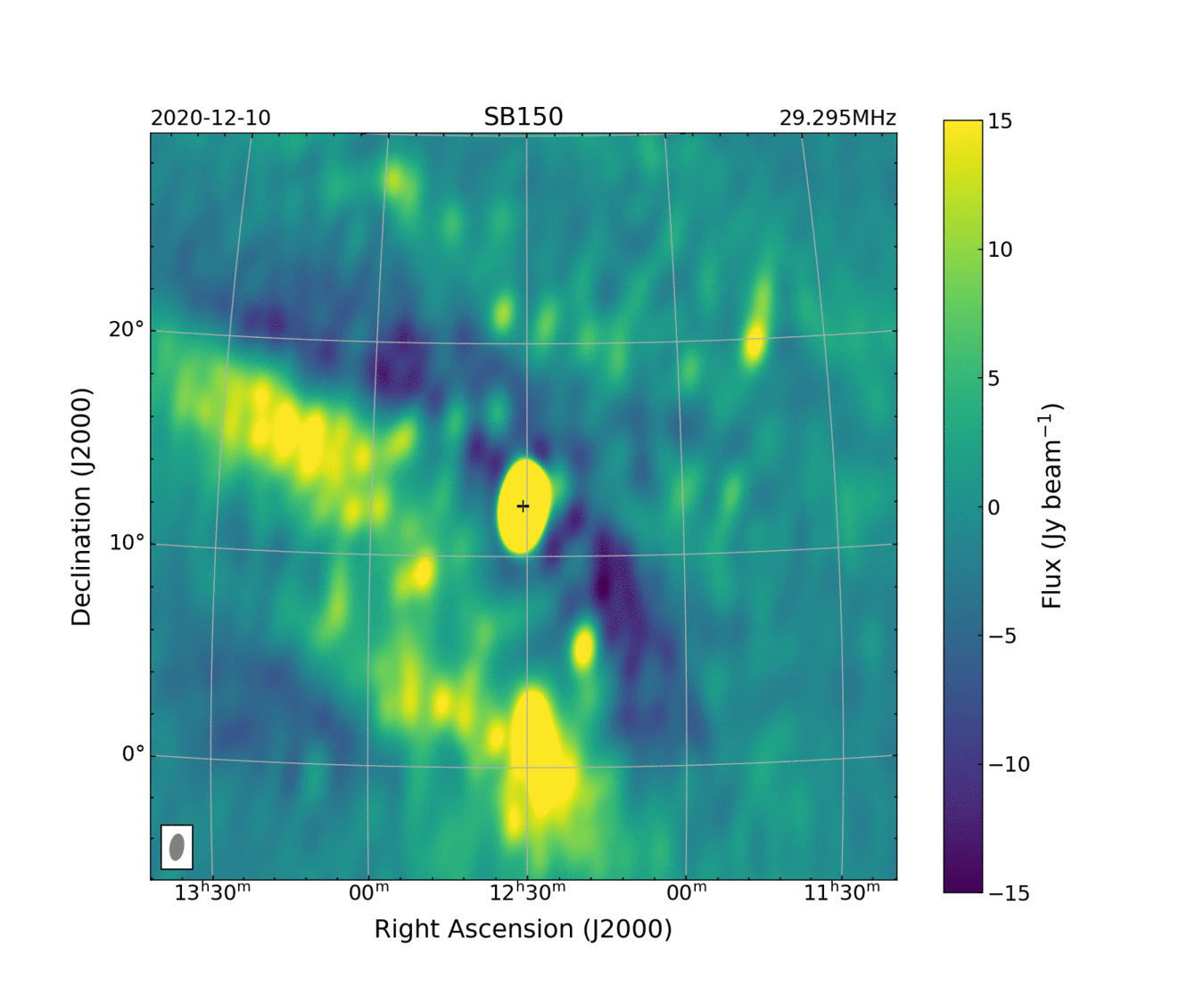
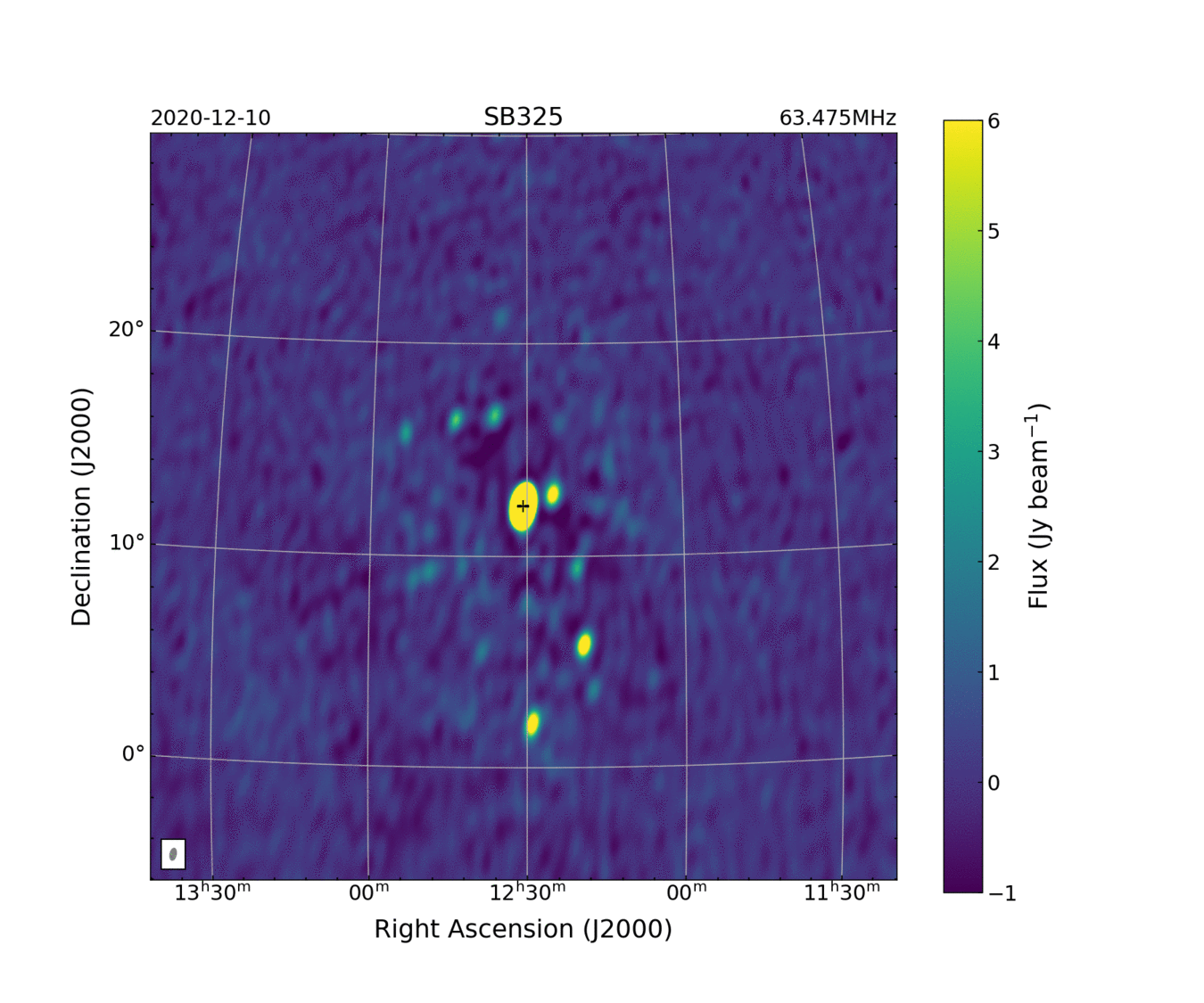
The Sun, seen in both bands, during a past observing day 03/10/2020 (2h) compared with the 10/12/2020 observation (10h)
